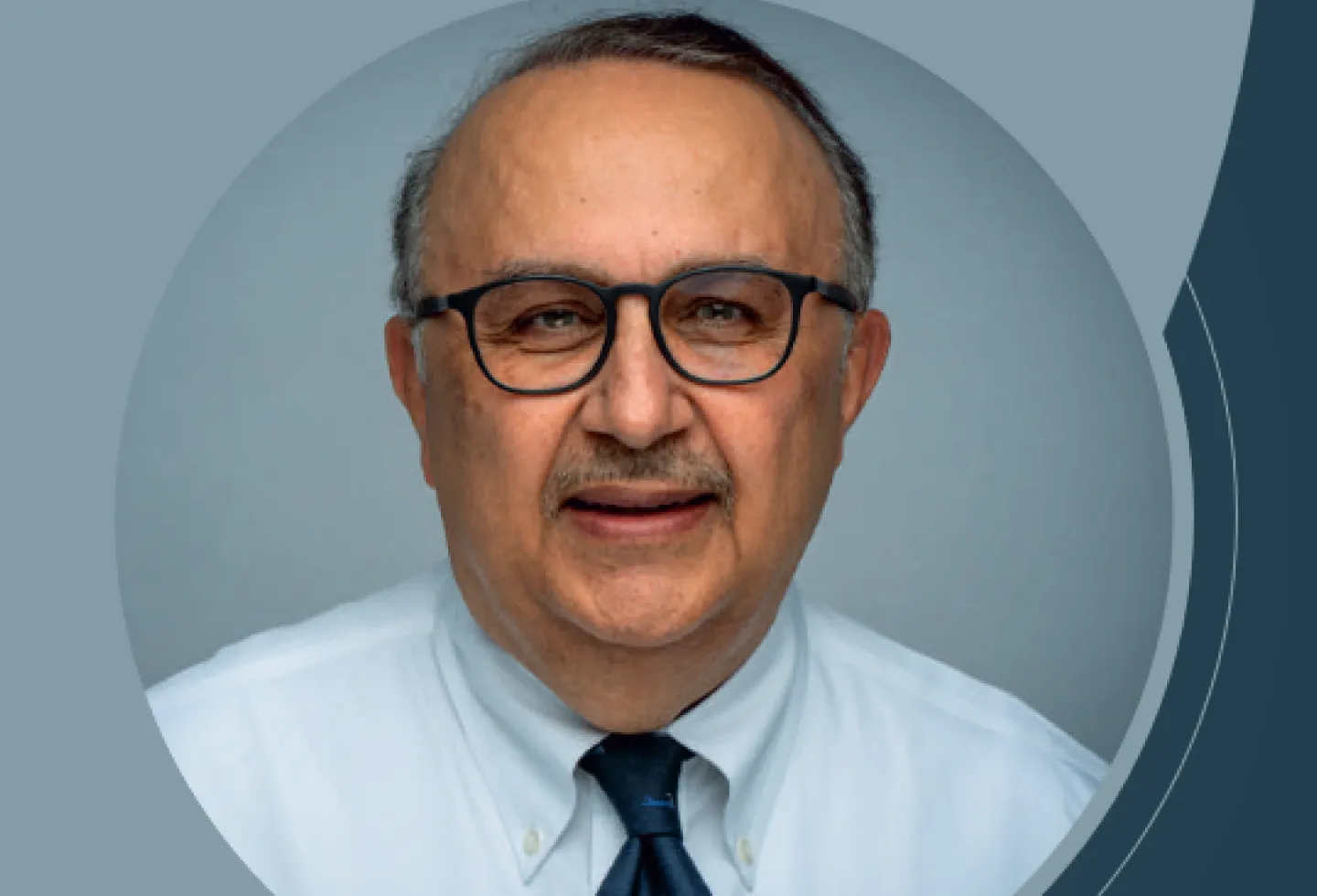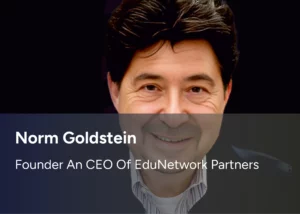As modern technologies emerge and societal norms shift, the expectations and demands placed on media professionals continue to grow. Understanding the complex dynamics of these changes is essential for anyone aspiring to flourish in this industry.
Badran A. Badran, a seasoned media expert offers a comprehensive look at the challenges and opportunities within the realms of journalism, public relations, and media education.
From the foundational principles of effective campaign planning to the nuanced implications of accreditation standards, Prof. Badran’s insights are invaluable for aspiring and current media professionals alike.
Prof. Badran has always had a unique bond with the media, dating back to his early years. He used to buy food, drinks, and a newspaper or magazine from his daily allowance.
Throughout middle and high school, Prof. Badran was an avid reader, and his nocturnal companion was the radio. He was surrounded by intellectual influence because he came from a well-read family where every member had a successful career or a university degree.
Voyage of a Staunch Leader
Prof. Badran was not aware of the impact of an image until his late father, a photojournalist and artist, showed him. He instilled in Prof. Badran an appreciation for visual storytelling through his many discussions about the requirements for becoming a good photographer.
He learned how to write and speak flawless Arabic from his mother, who was an exceptional educator. She spent hours every week teaching Prof. Badran all topics, notably Arabic composition, and she never compromised on proper language and pronunciation.
Prof. Badran’s comprehension and appreciation of media have been influenced by this demanding education in language and the arts.
Prof. Badran minored in linguistics while studying English language and literature in college. He was the cohort valedictorian and graduated with honors. The only field in which he could pursue graduate study funding was the media.
A few months later, he was in the American Midwest, namely in Bloomington, Indiana. He had not realized at the time that he’d been accepted into one of the top ten journalism programs.
The next eighteen months were some of the hardest and most demanding times of Prof. Badran’s life. To pass the examinations and fulfill the program’s extremely high criteria, he studied day and night.
He eventually became a different man after graduating from Indiana University. The demanding nature of the journalism curriculum helped him improve as a writer, researcher, and editor.
After that event, he felt more confident in his talents, and difficulties that had before seemed insurmountable were manageable.
Prof. Badran received his doctorate from the University of Massachusetts in Amherst three years later. The most enjoyable aspect of the experience was being in a supportive setting that valued and appreciated knowledge.
The closest city was Boston, where he frequently spent weekends visiting his cousin, an engineering major at Northeastern University.
In his dissertation, Professor Badran looked at editorials from prominent American and European publications concerning the Israeli-Palestinian issue. This investigation gave him a better understanding of the connection between politics and the media.
In analyzing the fundamental reasons for the dispute and the several ways bias and prejudice appear in editorial writing, he pointed out numerous strengths and weaknesses of elite newspapers.
Professor Badran’s journey into academic administration started with a risky move that called for bravery. Prof. Badran was asked to cover for the department head at a university in the United Arab Emirates when he unexpectedly became ill.
Throughout this three-year temporary assignment, he learned a great deal about the students, instructors, staff, and most crucially, bureaucracy at the institution. Prof. Badran encountered numerous challenges during his first term that put his convictions and, frequently, his patience to the test.
Subsequently, Professor Badran relocated to a recently established institution. He spent the best years of his academic career at Zayed University (ZU).
There, seasoned and encouraging colleagues from a variety of countries surrounding Prof. Badran, all committed to helping a fledgling university whose goal was to educate Emirati women.
At Zayed University (ZU), Prof. Badran held several posts, including acting director of community relations (which oversaw media relations among other things), assistant dean, associate dean, assistant provost, executive assistant to the vice president, and numerous other duties.
He describes this time as a combination of the thrill of starting a new organization, the everyday education from more seasoned colleagues, and the infinite hours spent creating and detailing ideas and plans—some of which were never implemented.
Professor Badran left ZU after 25 years to take a position as head of the media faculty at Liwa College in Abu Dhabi and Al Ain. Using his vast administrative expertise, he is leading his faculty into the twenty-first century in this new role.
According to Prof. Badran, academic administrators need to have a plan and a vision for how they want their college to develop and where they want to take them, in addition to managing daily responsibilities.
This entails listening to coworkers, students, and outside stakeholders in addition to bosses, which is crucial. He makes it clear that failing to pay attention to any part of this mixture fails.
Aligning Education with National Goals
Prof. Badran emphasizes how crucial it is to comprehend the goals of the UAE and the future labor requirements of the nation. He supports comparing the organization’s performance to that of the best programs in the world and implementing effective internal procedures.
A few essential phrases that best describe Prof. Badran’s teaching methodology are thorough planning, active student participation, pertinent and motivational case studies and examples, and assessment techniques that gauge higher-order thinking and application.
Online and hybrid teaching techniques perform well at the graduate level but frequently fall short at the undergraduate level for a variety of reasons. Graduate students are responsible for their education and feel a degree of maturity.
As a result, individuals prepare readings, and communicate with their teachers, and it is feasible to determine that they have met the course’s learning objectives.
However, Professor Badran notes that a large number of undergraduate students either log in and leave the class or do not even show up for the virtual courses.
Because there is no proof of learning and because cameras are frequently turned off for social reasons, he does not think the online/hybrid paradigm is effective at this level.
Prof. Badran highlights that certain precautions must be taken if circumstances such as pandemics demand the use of online or hybrid teaching and learning.
Leveraging Linguistic Diversity
Prof. Badran, who is trilingual in Arabic, English, and Italian, believes that having access to resources in three languages is incredibly powerful. Nonetheless, he spoke mostly in Arabic and English when he was a professor at Zayed University (ZU).
His students especially enjoyed the fact that he was able to explain complex ideas and vocabulary in both languages because of this bilingual approach.
Academically challenged students, who frequently had difficulty learning a foreign language, benefited the most from this approach. It also made more sense to talk about Emirati culture in Arabic rather than in a foreign tongue.
Because of his students’ modest English skills, Prof. Badran teaches only Arabic in his present role at Liwa College.
He finds that teaching media and communication in the local tongue works especially well because his pupils want to work in Arab media. This method improves their comprehension of the subject matter and fits in nicely with their career goals.
Upholding Academic Excellence
Not everyone understands or cares about applying standards. In higher education, they are the difference between successful organizations and amateur ones. In the Gulf region today, there is a refreshing awareness of the importance of academic standards.
Colleges and universities cannot be licensed or re-licensed if they do not apply standards. The main challenges that Prof. Badran sees are costs and the need for training and monitoring the application of standards.
For example, there is a standard that limits the number of students in a lab course.
This has cost implications because the institution must hire additional faculty. Most standards require additional costs for facilities, equipment, personnel, etc. Also, a unit is needed to ensure that standards are applied consistently and correctly across the institution.
This is usually the Quality Assurance or Accreditation unit. Administrators spend many hours managing the application of standards. But standards are not optional now.
Prof. Badran believes that the UAE Commission for Academic Accreditation (CAA) is doing an excellent job of making sure that standards are applied in institutions of higher learning in the country.
There are other particularly good examples in the Gulf region. He also believes if higher education institutions choose to seek international accreditation at the institutional or program level, their capabilities in applying standards improve and they get an additional external stamp of approval.
Insights on Accreditation, Emerging Trends, and Effective Media Campaigns
Prof. Badran asserts that an assessor of program and institutional accreditation must verify the degree of compliance of the institution with the particular standards set out by the accrediting authority.
Typically, the submission of a self-study, essentially a compliance report—occurs before the review.
A site visit is also scheduled to allow reviewers to meet with officials, interview staff, students, alumni, and other relevant parties, as well as to examine facilities, personnel files, course files, and other materials.
Reliable responses to the queries posed during the accreditation review are provided by the combination of the self-study and the site visit. The primary inquiry to be addressed, aside from standard execution, is the degree to which the organization lives up to its strategic statements and programs.
The most important trends in media education now are the quick evolution of artificial intelligence (AI), the use of small media, and wearable digital media, and how social media spending has increased significantly at the expense of traditional media.
The Faculty of Media at Liwa College will organize a conference of academics and researchers to discuss emerging trends and how best to respond to them. Some faculty are already using AI in their research and teaching and this trend will intensify next year.
Prof. Badran states that it is important to be cognizant of what employers need in terms of graduates’ knowledge and skills. Developing countries cannot afford to offload graduates who are not competitive in the marketplace.
This requires constant fine-tuning of curricula and learning outcomes.
When teaching media campaign design and execution, Prof. Badran constantly tells his students that for a campaign to succeed, they need to do extensive study on the subject, narrow down their goals to a manageable number, and pinpoint their target audience precisely.
He stresses the significance of formulating a distinct plan, selecting the appropriate combination of media to deliver the strategic messages, creating a campaign timetable and budget, and deciding early on how they would assess their success or failure.
Prof. Badran notes that there are many excellent campaigns in the GCC, but there are also some weak ones. He primarily blames the copycat effect and, more generally, the lack of originality in certain campaign teams for this.
Encompassing Integrity, Creativity, and Effective Communication
The first piece of advice from Prof. Badran is very clear: if your heart isn’t in it, don’t seek a career in media or public relations. He stresses that not everyone is suited for a career in the media in general or public relations.
A compelling storyteller is essential for success in this industry, whether one is a scriptwriter, radio host, internet publisher, or advertising writer. Effective communication abilities are crucial.
Professor Badran also emphasizes the need for innovation and creativity, having the capacity to see past current difficulties, and having the ability to perceive the broader picture.
Prof. Badran acknowledges that his passion for calligraphy, painting, and photography taught him how to be creative. He is lucky to come from a creative family that includes outstanding statesmen, educators, painters, designers, and award-winning architects.
Prof. Badran also stresses the importance of learning how to conduct appropriate research for a client, brand, or product launch. Research abilities are crucial in the media, he claims.
Extensive research about the topic and the audience forms the foundation of a compelling speech, just as sound research is the foundation of a fantastic campaign.
While he stresses the value of maintaining control, he also suggests learning how to use AI. AI can make recommendations and offer solutions, but human communication requires the communicator’s thinking.
Prof. Badran concludes by emphasizing the value of upholding ethics despite how alluring alternatives may seem. Ethical behavior and integrity are essential traits for success, he concludes.





